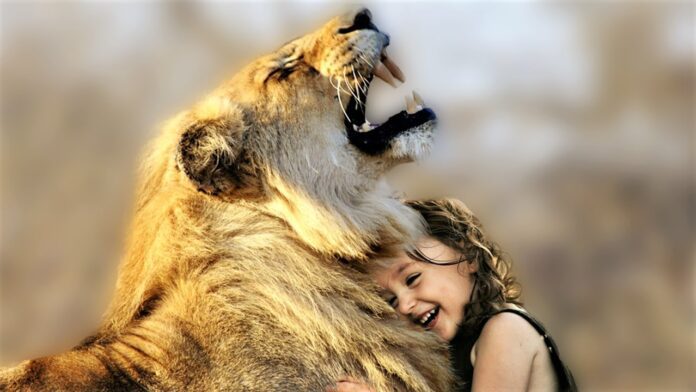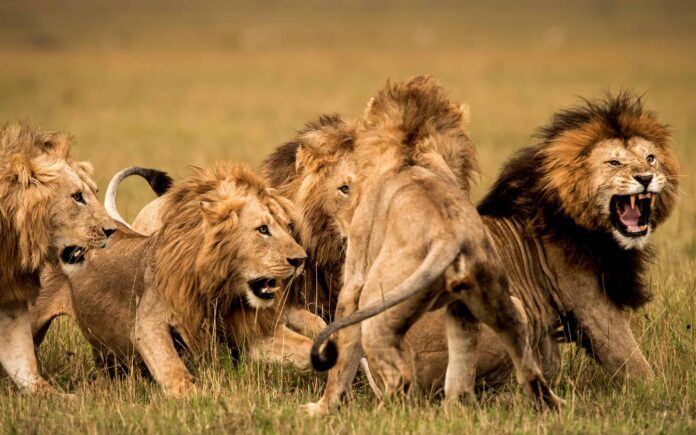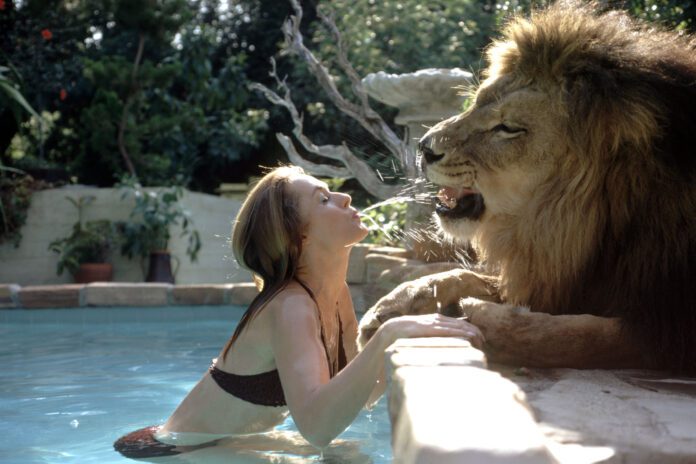Overview of Nonverbal Pet Lion Communication
Nonverbal communication serves as the primary mode of interaction between humans and their pet lions. Unlike domesticated cats and dogs, lions are not as vocal but communicate profoundly through body language and various nonverbal cues. Understanding these signals enhances the bond between you and your exotic companion, promoting a safer and more emotionally enriching environment. Key aspects include posture, facial expressions, eye movement, and tail positioning, each providing critical insight into your lion’s mental and emotional state. By learning to interpret these signals accurately, owners can foster a deeper connection and mutual respect with their majestic pets.
Key Takeaways
- Understanding nonverbal pet lion communication is crucial for a strong bond.
- Recognizing your lion’s body language can prevent misunderstandings.
- Facial expressions and tail movements reveal your lion’s emotions.
- Proper interpretation of nonverbal cues ensures a safer environment.
- Building trust with your lion involves consistency and patience.
Understanding Nonveral Communication in Pet Lions

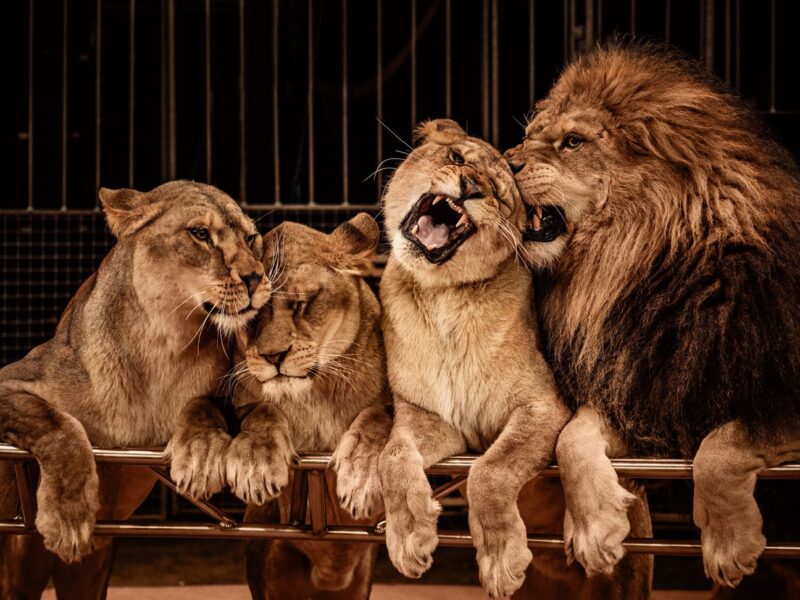
When we think about communicating with our pets, we often focus on verbal commands or cues. However, with exotic animals like pet lions, nonverbal communication plays an exceedingly pivotal role. Unlike typical household pets, lions use a complex system of body language, facial expressions, and vocalizations to communicate. Understanding these signals can significantly enhance the trust and bond between you and your majestic companion, making it easier to manage and care for them safely.
Importance of Nonverbal Communication
Nonverbal communication is essential in building a strong and respectful relationship with your pet lion. Lions, by nature, are not vocal communicators; instead, they rely heavily on body language to express their needs, feelings, and intentions. By learning to interpret these silent signals, you can anticipate your lion’s behavior and meet their needs more effectively. This understanding helps prevent misunderstandes and potentially dangerous encounters. Moreover, it reassures your lion, as they feel understood and secure in their environment.
Common Nonverbal Cues to Look For
To begin interpreting your lion’s nonverbal signals, focus on several key behaviors:
- Eye contact: Lions use eye contact to communicate emotion and intent. Prolonged eye contact might be a challenge or threat, while averted eyes can indicate submission or fear.
- Vocalizations: While generally quiet, lions do use a range of vocal sounds to communicate. A soft moan might indicate discomfort, whereas a louder roar can be a sign of aggression or a call for attention.
- Ears position: Like many animals, lions use their ears to express feelings. Ears that are pushed forward might indicate interest or curiosity; flattened ears often suggest aggression or fear.
- Whisker position: Subtle changes in the positioning of the whiskers can help indicate mood. Forward-facing whiskers can show alertness or aggression, while relaxed whiskers might point to a calm state.
These are initial guides to begin with, and as you observe your lion, you’ll start to notice more specific cues indicative of their mood and health.
“Mastering the silent language of your pet lion not only ensures a safer environment but also deepens the bond between you and your majestic companion.”
Interpreting Your Pet Lion’s Body Language

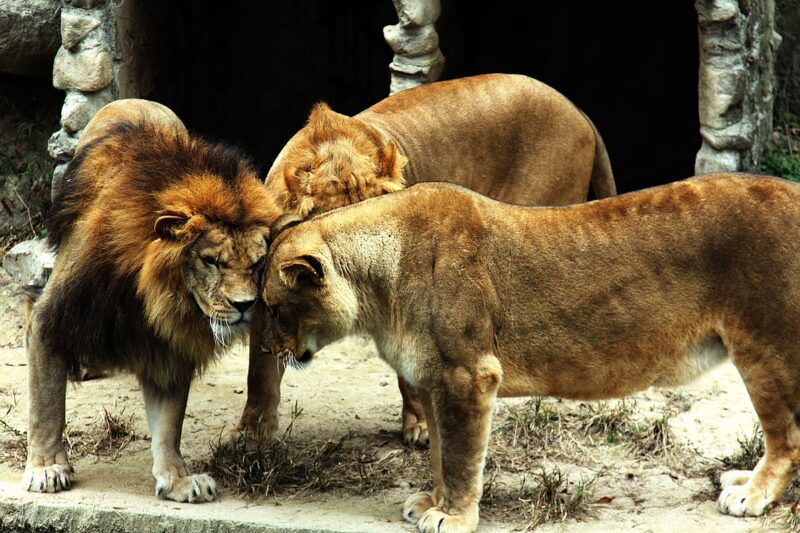
Once you become familiar with basic cues, you can delve deeper into the specific aspects of lion body language. This involves paying close attention to various parts of their body and understanding the message each part conveys.
Tail Movements: What They Mean
The tail is an excellent predictor of a lion’s emotional state. Different movements can indicate different emotions:
- Lashing tail: This usually indicates irritation or displeasure. If your lion is flicking its tail rapidly, it might be a good idea to give them some space.
- Tail held high: When a lion holds its tail high, it often shows confidence and assurance. This is a positive sign, suggesting they feel comfortable and dominant in their environment.
- Gentle wag: A slow, gentle wag of the tail can be seen when your lion is relaxed and content, often while lying down after a meal or during a calm moment.
Understanding these tail movements provides real-time insight into how your lion is feeling, allowing you to respond appropriately.
Facial Expressions: Reading Emotions
Lions have expressive faces, and learning to read these expressions can provide deep insights into their emotions. Here are some typical expressions and their possible meanings:
- Relaxed face: A relaxed lion might have a slightly open mouth, loose lips, and half-closed eyes. This expression often occurs when they feel safe and content.
- Furrowed brow and bared teeth: This can indicate aggression or discomfort. It’s essential to recognize this expression early to safely manage the situation.
- Whiskers forward and focused gaze: This combination often means your lion is curious or concentrating on something. It can be a response to a new object or even your presence.
By recognizing these facial cues, you can better understand your lion’s current emotional state and intentions, enhancing interaction safety and comfort.
Posture and Gestures: Decoding Messages
Posture and physical gestures are also crucial in lion communication. These body languages often indicate social hierarchy, mood, and intentions:
- Stiff, upright posture: A lion standing stiffly with ears perked forward is likely alert and assessing its surroundings. This could indicate curiosity or suspicion.
- Lying down with back to you: This is a sign of trust. Lions are most vulnerable when lying down, so this position suggests they feel safe with you around.
- In contrast, a lion crouching with a lowered head might be preparing to pounce or feeling threatened.
These physical postures can help you gauge whether your lion feels comfortable, threatened, or playful, enabling you to react in ways that reinforce positive behavior and avert misunderstandings.
By learning to interpret these various nonverbal cues, you not only ensure a safer environment but also deepen the mutual respect and understanding between you and your exotic companion. This connection is vital for anyone who chooses to live closely with such a powerful and majestic animal as a pet lion.
Strengthening Bond Through Nonverbal Communication


Understanding the nonverbal cues of your pet lion is essential for a strong, respectful relationship. Observing and reacting appropriately to your lion’s body language not only ensures safety but also enhances the bond between you. It’s like learning a new language, where each gesture, expression, and posture has a specific meaning, helping you understand your majestic companion’s needs, moods, and feelings without a word spoken.
Ways to Respond Appropriately
Here are several ways you might respond sensitively to your pet lion’s nonverbal signals:
- Tail Movements: A lion’s tail can communicate a variety of emotions. A relaxed sway might mean your lion is in a good mood, while a tail tucked between the legs could indicate fear or discomfort. If you observe the latter, consider the environment and what might be causing distress, ensuring to eliminate any threats or sources of fear.
- Ears and Eyes: A lion that is feeling defensive or irritated might pin its ears back or have dilated pupils. On the other hand, when a lion’s ears are forward and their eyes calm, they are likely feeling content and attentive. In moments of tension, avoid sudden movements and maintain a calm demeanor to reassure your lion.
- Roaring or Growling: These vocalizations can indicate discomfort, territorial warnings, or a mere communication to other lions. If your lion growls or roars, give them space and observe from a safe distance. Over time, you’ll learn to differentiate the sounds and understand the context in which they are made.
- Body Posture: A relaxed posture in lions shows trust and comfort. If your lion lies down with its back to you or displays its belly, it shows a high level of trust and comfort with your presence. Conversely, a rigid body stance might mean they are alert or uneasy. In such cases, maintain a respectful distance and avoid direct eye contact to lower any perceived threat.
Responding to these cues with understanding and patience is key. Never punish your lion for communicating its feelings, as this can lead to mistrust and fear. Instead, adjust your behavior based on what their cues tell you, consistently showing them that you are a safe and dependable leader and companion.
Building Trust and Connection
Building a trusting relationship with a pet lion involves consistency, patience, and a thorough understanding of their nonverbal communication. Here are some strategies to help build this vital connection:
- Consistent Daily Interactions: Regular, predictable interactions help build trust. Engaging in routine feeding, grooming, and playtime at the same times each day can help your lion feel more secure and understand that you are dependable.
- Respecting Space: Just like humans, lions need their own space. Respecting this and avoiding forcing interactions can further strengthen trust. Allow your lion to come to you when they feel comfortable doing so.
- Observation Time: Spend time simply observing your lion without interacting. This can help you learn their habits, preferences, and forms of communication. The more you know about their natural behaviors, the better you can understand their unique ways of expressing themselves.
- Positive Reinforcements: When your lion communicates in a way that’s positive or desirable, reinforce these behaviors with treats or affection. This not only rewards the behavior but also positively reinforces your mutual communication.
- Patience is Key: Lastly, remember that building a trusting relationship with a lion takes time. Patience is essential, as trust cannot be rushed. Consistently treating your lion with understanding and respect will lay the foundation for a deep and enduring bond.
Through attentive observation and sensitive response to your lion’s nonverbal cues, you can establish a relationship built on mutual respect and understanding, where both you and your majestic companion can feel secure and connected.
Related Article : 5 Tips for Bonding with Your Pet Lion
Final Thoughts
Understanding the nonverbal cues of your pet lion is essential for building a strong and respectful relationship. By paying close attention to their body language and responding appropriately, you can ensure a safer and more harmonious environment for both you and your majestic companion. Remember, each lion is unique, and getting to know your own lion’s specific communication styles can be both a rewarding and enlightening experience. Stay observant, stay patient, and most importantly, stay engaged with your pet lion’s world.
Frequently Asked Questions
1. How do I know if my pet lion is feeling threatened?
Look for signs like a lashing tail, flattened ears, or a furrowed brow. These cues indicate discomfort or aggression.
2. What should I do if my lion shows signs of irritation?
Give your lion some space and avoid sudden movements. Observe what might be causing the irritation and address it calmly.
3. Can pet lions show affection through nonverbal communication?
Yes, a relaxed posture, gentle tail wag, and soft vocalizations can indicate your lion feels comfortable and trusts you.
4. How can I build trust with my pet lion?
Consistent interactions, respecting their space, and positive reinforcement are key strategies for building trust with your lion.
5. What are the common mistakes to avoid in nonverbal communication with lions?
Avoid misinterpreting signals, forcing interactions, and not respecting your lion’s need for space and quiet time.
Ready to deepen your bond with your pet lion? Start observing their nonverbal cues today and unlock a new level of understanding and connection with your majestic companion. Share your experiences and learn from others in our community of exotic pet enthusiasts!







